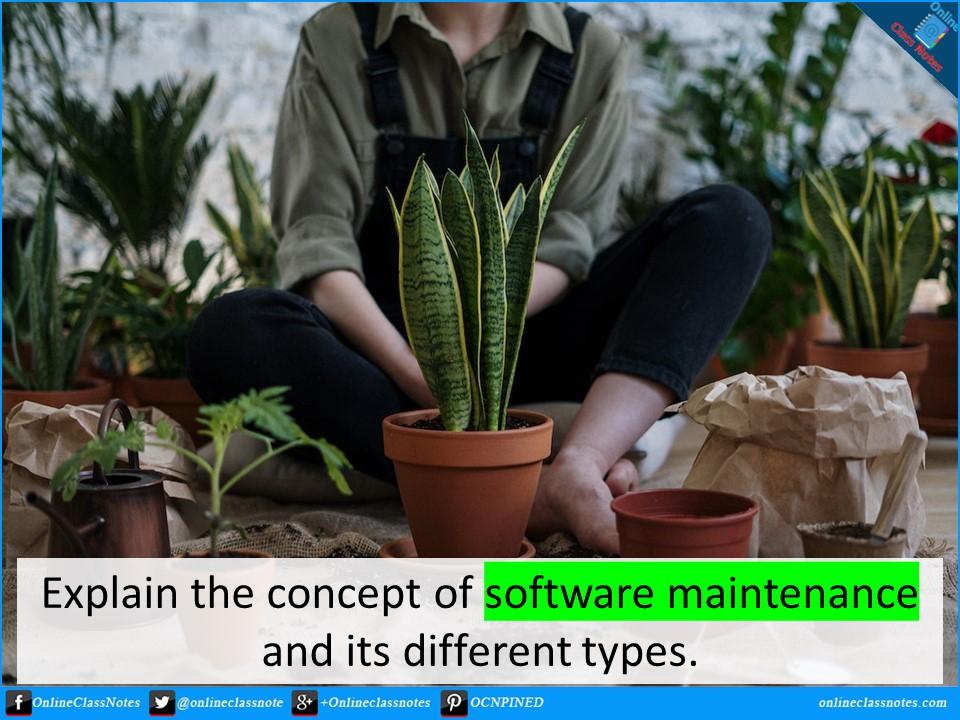Unveiling Software Maintenance: Understanding Concepts and Types
Introduction:
Software maintenance is an integral part of the software development life cycle, encompassing activities aimed at managing and enhancing software applications after their initial deployment. It involves modifying, updating, and troubleshooting software to meet changing user requirements, fix defects, improve performance, and ensure continued functionality
Understanding Software Maintenance:
Software maintenance refers to the process of managing and evolving software applications throughout their lifespan. It involves making modifications, performing updates, and resolving issues to ensure the software remains effective, reliable, and aligned with the evolving needs of stakeholders and users. Software maintenance is an ongoing process that extends beyond the initial development phase, aiming to maximize the longevity and value of software applications.
Types of Software Maintenance:
Corrective Maintenance:
Corrective maintenance involves addressing defects or errors discovered in the software during its usage. It focuses on identifying and fixing bugs, issues, or unexpected behaviors that hinder the proper functioning of the software. Corrective maintenance ensures that the software performs as intended, providing a stable and error-free user experience.
Adaptive Maintenance:
Adaptive maintenance involves modifying the software to accommodate changes in the operating environment, user requirements, or technological advancements. It aims to ensure that the software remains compatible with evolving hardware, software platforms, or business rules. Adaptive maintenance enables the software to adapt to new technologies, regulations, or user preferences, keeping it relevant and effective.
Perfective Maintenance:
Perfective maintenance aims to improve the software’s performance, efficiency, and maintainability without changing its functionality. It involves enhancements to optimize the software’s code, algorithms, or user interface, resulting in better performance, usability, and maintainability. Perfective maintenance focuses on refining and fine-tuning the software to enhance its overall quality and user satisfaction.
Preventive Maintenance:
Preventive maintenance focuses on proactively identifying and addressing potential issues or risks before they manifest as problems. It involves activities such as code refactoring, system upgrades, or security patching to prevent future failures or vulnerabilities. Preventive maintenance aims to minimize the occurrence of defects, improve system reliability, and reduce the need for reactive maintenance.
Emergency Maintenance:
Emergency maintenance involves immediate and unplanned actions to address critical issues that require immediate attention. It includes fixing severe defects, resolving system crashes, or addressing security breaches. Emergency maintenance aims to restore the software’s functionality and mitigate any adverse impacts on users or business operations.
Importance of Software Maintenance:
Enhanced Software Performance:
Software maintenance ensures that the software remains performant, efficient, and responsive. By addressing defects, optimizing code, and improving algorithms, maintenance activities enhance the overall performance of the software, providing a better user experience and increasing productivity.
Alignment with Changing Requirements:
Software maintenance enables the software to evolve and adapt to changing user needs, business processes, or industry regulations. By incorporating new features, modifying functionalities, or accommodating technological advancements, maintenance activities ensure that the software remains relevant and aligned with the evolving environment.
Increased Reliability and Stability:
Maintenance activities, such as bug fixing and system upgrades, improve the software’s stability and reliability. By addressing defects and vulnerabilities, maintenance efforts reduce the likelihood of system failures, data loss, or security breaches, ensuring the software operates reliably and securely.
Cost-Effectiveness:
Proper software maintenance can be cost-effective compared to developing a completely new software solution. Regular maintenance activities help identify and rectify issues early, reducing the need for extensive rework or major system overhauls. This results in cost savings and maximizes the return on investment in software development.
Longevity of Software Applications:
Effective software maintenance prolongs the lifespan of software applications, avoiding premature obsolescence. By continuously enhancing and adapting the software, maintenance efforts ensure its continued usability, relevance, and value over an extended period.
Software maintenance is a crucial aspect of software development, focusing on managing and evolving software applications to meet changing requirements, address issues, and optimize performance. Understanding the different types of maintenance activities—corrective, adaptive, perfective, preventive, and emergency—enables organizations to effectively manage their software assets and ensure their longevity. By investing in software maintenance, businesses can maximize the value of their software applications, provide a better user experience, and adapt to the ever-changing technological landscape.
